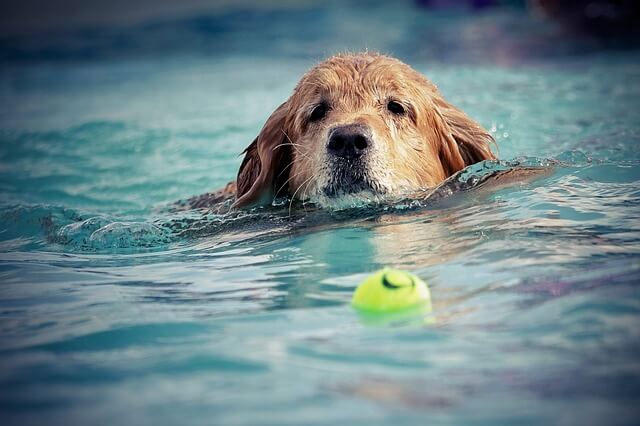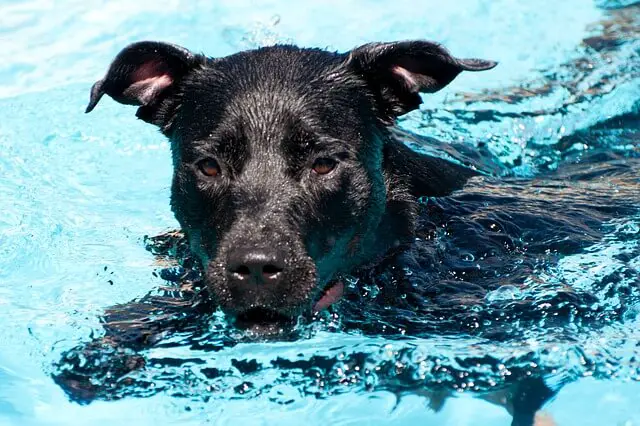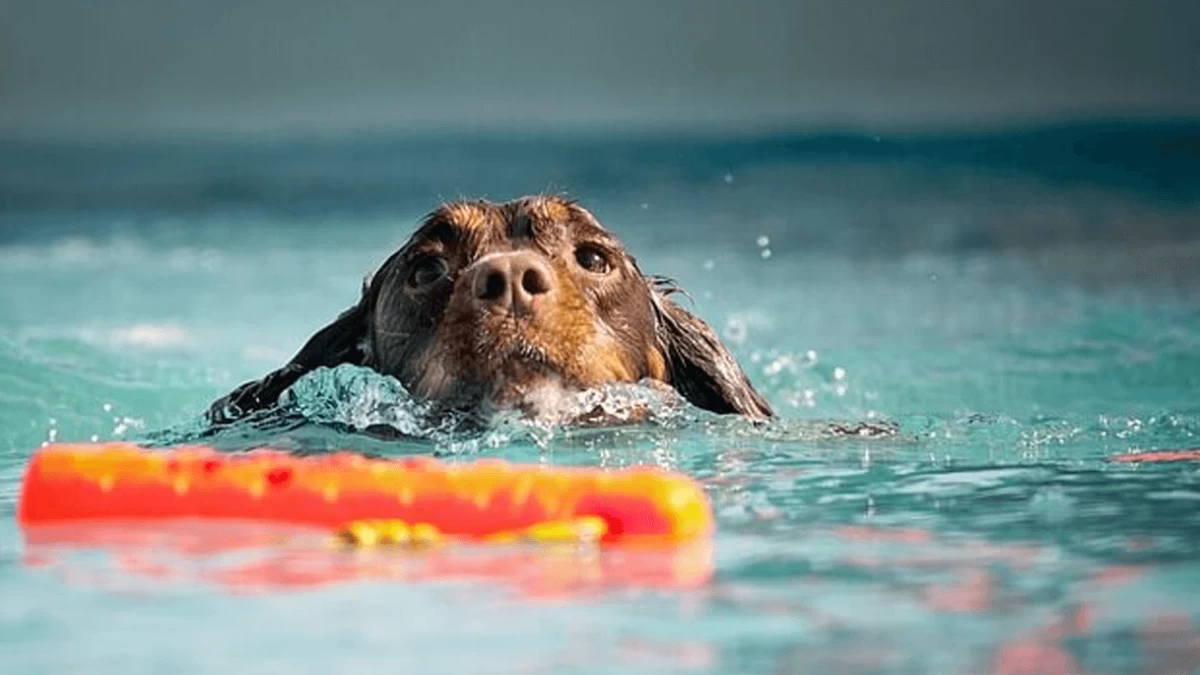Is Swimming Therapeutic for Dogs and What is Hydrotherapy?
04.04.2022.
Swimming has numerous benefits for humans, from cooling off during hotter parts of the year to maintaining healthy body weight and stamina. As it turns out, our beloved dogs may benefit from the same thing.
Your working dog may benefit from water exercise to stay fit, relieve arthritis pain, or help them recover from surgery. Swimming for dogs has been shown to have several therapeutic benefits, and here is what you should know about how swimming can benefit and help your dog.
Benefits of hydrotherapy for dogs
Dogs can need aquatic therapy for various reasons, whether on their own or because their vet said it is a good idea.
Hydrotherapy is an excellent preventative measure for bone and joint damage. It promotes physical fitness and improves overall health while having a low impact on joints and bones. It's a great way to ensure your dog retains their top shape all year long.
The youngest a dog can undertake aquatic therapy is 12 months. Their owners can use water therapy to increase their dog's overall fitness abilities, strength, and improve their stamina. As an example, a dog used to working or running alongside their owner can stay in shape with water exercise when the pavement is icy or salty in the winter.

An ACL tear or the need to help an arthritic dog move around more easily, maintain muscle mass, and recover after surgery are some of the most frequent reasons dog owners bring their dogs for water therapy.
In less than 2 months, dogs that aren't exercised can lose a significant amount of their overall muscle mass. Swimming is a wonderful exercise for any dog, regardless of their age or muscle loss degree, because it makes the dog nearly completely weightless.
Dogs that have been injured or have joint pain can benefit significantly from the resistance and buoyancy that water offers as an exercise medium. Resistance from the water helps work the muscles well because water has a higher density than air. The time spent exercising in water may be less than the amount of time spent exercising on land for the same goals to be met.
Type of aquatic exercises for dogs
The needs of each dog are as diverse as the aquatic facilities that house them. Somes have high-tech equipment like underwater treadmills, while others have pools.
Underwater treadmill
As the name suggests, an underwater treadmill encases the treadmill in a water-filled tank. Each pet's tank is customized to meet the dog's specific needs, and it quickly empties after the workout is over. The buoyancy provided by the underwater treadmill eases the strain on the dog's aching limbs and joints as they walk.

The first thing the staff will do is measure the dog and fill the tanks with adequate water levels. Dogs who underwent spinal surgery can only walk at 0.5 mph they did before surgery. A well-conditioned dog may be able to run at a speed of 2.5 mph. In spite of the relatively slow pace, the water resistance significantly enhances the benefits of exercising.
Hydrotherapy pool
Many aquatic centers for dogs have hydrotherapy pools where dogs can swim, play fetch in the water, or simply learn to swim with the help of a licensed doggy swim teacher that works at the facility. As a result, each facility has a unique method of exercising dogs in their lap pools.
Warm water is preferable to cool water for some dogs. Athletic dogs do better in water that isn't too warm. To keep their body temperature stable during their workout, these dogs train or exercise in colder water. Using warm water to ease muscle tension is becoming more and more popular in rehabilitation and therapy.
For dogs, the amount of time they spend in the pool is entirely at the discretion of the veterinarian. Most doggy swimming training sessions last between 10 and 30 minutes.

If a dog has undergone surgery, is recovering from an injury, or is obese or otherwise unfit, they are usually placed at the bottom rung by the staff. In order to determine when the dog should take a break, the facility's staff will keep track of its heart rate.
How can dogs lose weight by swimming?
We have consulted several vets regarding the potential for weight loss in aquatic training for dogs. They all say that one of the most significant benefits of water exercise for dogs is the potential it provides them for weight loss.
When you try to move their joints with that extra weight, it can be difficult. The staff can work the dog's muscles without putting too much strain on their joints because they're floating in the water. As a result, the dogs appear to be in better physical condition.
To keep track of your dog's weight loss journey, vets recommend that you keep a food and exercise diary for your pet.
What if my dog isn't a great swimmer?
Dogs aren't all born swimmers. As with humans, dogs might need to learn how to swim.
Teaching dogs how to swim or overcome their apprehensions is unique at each facility. Most importantly, they advise owners to make sure their dogs are at ease in the water before engaging in water training or therapy.
In any case, safety and comfort are of the utmost importance. People who own dogs should always pay attention to their dog's signals and do what's best for their physical and psychological well-being at all times.
To put it simply, if a dog is scared of the water, don't force them to do something they are afraid of. If your veterinarian believes that swimming would benefit your dog, but your dog is fearful of water, it is best to seek professional advice.
Hydrotherapy associated risks
There are numerous benefits to hydrotherapy and swimming to dogs, but there are also some risks dog owners should be aware of when their animals are in the water. Ear infections are fairly common because the ear canals often get wet and aren't dried properly, agitation of certain skin conditions, and excessive exhaustion can lead to drowning if dogs are not adequately monitored.

Despite the fact that pet owners may be concerned about the presence of chlorine, the chemical should not be a cause for alarm. A dog's toxicity to chlorine is determined by the amount of chlorine present in the water. A properly maintained pool is safe for both dogs and humans. UV filtration systems, which reduce the need for high chlorine levels in pools, are also common in aquatic facilities.
If your dog has a history of illness, your veterinarian may advise that they wait until they have recovered completely before letting them into the water. If your dog has a urinary tract infection, skin infection, ear infection, or open wound, you should postpone hydrotherapy until these conditions have passed.
There should be no delay in removing dogs from water if they begin to cough or appear to have difficulty breathing. Too much water can cause water intoxication or even pneumonia in dogs, so the staff should always keep an eye on their canine patients.
There is no excuse for leaving pets in the water unattended. If there are signs of stress, the activity should be halted immediately. Heart and blood pressure may rise in dogs who are anxious or stressed. Hydrotherapy is intended to be a gentle form of exercise. Any deviation from this goal necessitates an immediate end to the session.
Using an underwater treadmill and swimming are two very different ways to work out because they work different parts of the body. The two activities don't mix well together. Consult with your dog's veterinarian to find out what's best for your pet.
World Dog Finder team







Share